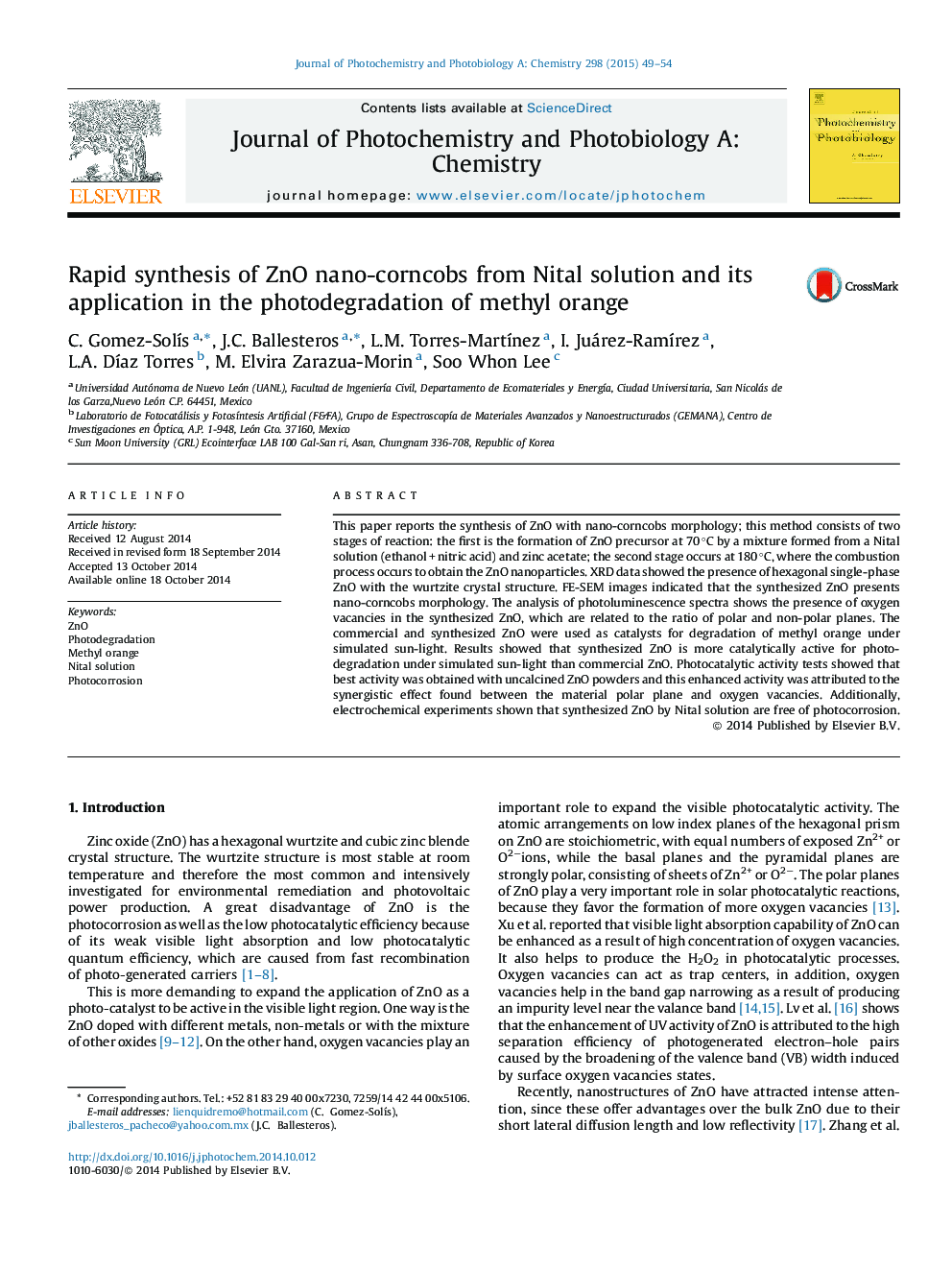| Article ID | Journal | Published Year | Pages | File Type |
|---|---|---|---|---|
| 25872 | Journal of Photochemistry and Photobiology A: Chemistry | 2015 | 6 Pages |
•The development of an innovative synthesis of ZnO from Nital solution.•The ethyl nitrate was used as fuel material.•The ZnO was synthesized at low temperature, around 180 °C.•The presence of oxygen vacancies help to prevent the photocorrosion phenomena in ZnO.
This paper reports the synthesis of ZnO with nano-corncobs morphology; this method consists of two stages of reaction: the first is the formation of ZnO precursor at 70 °C by a mixture formed from a Nital solution (ethanol + nitric acid) and zinc acetate; the second stage occurs at 180 °C, where the combustion process occurs to obtain the ZnO nanoparticles. XRD data showed the presence of hexagonal single-phase ZnO with the wurtzite crystal structure. FE-SEM images indicated that the synthesized ZnO presents nano-corncobs morphology. The analysis of photoluminescence spectra shows the presence of oxygen vacancies in the synthesized ZnO, which are related to the ratio of polar and non-polar planes. The commercial and synthesized ZnO were used as catalysts for degradation of methyl orange under simulated sun-light. Results showed that synthesized ZnO is more catalytically active for photodegradation under simulated sun-light than commercial ZnO. Photocatalytic activity tests showed that best activity was obtained with uncalcined ZnO powders and this enhanced activity was attributed to the synergistic effect found between the material polar plane and oxygen vacancies. Additionally, electrochemical experiments shown that synthesized ZnO by Nital solution are free of photocorrosion.
Graphical abstractFigure optionsDownload full-size imageDownload as PowerPoint slide
